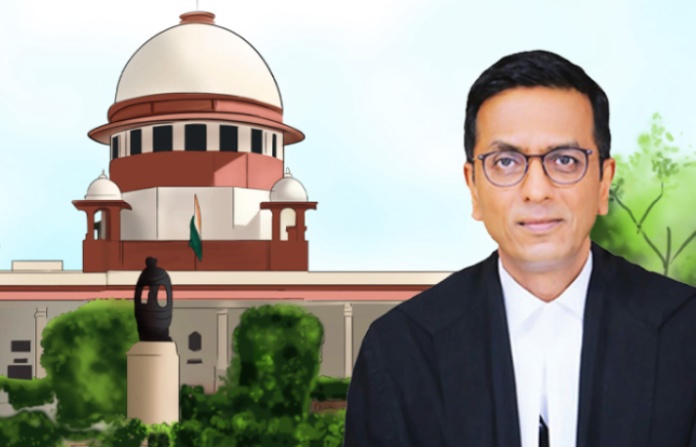Supreme Court Ruling: The Supreme Court today gave a historic decision. Under this, a bench of seven judges of the Supreme Court has approved the quota within the quota reserved for Scheduled Castes and Scheduled Tribes with a majority of 6-1. The court says that quota within quota is not against inequality. The seven-judge bench of the Supreme Court has said that the state government can create sub-categories i.e. sub-classes within Scheduled Castes and Scheduled Tribes, so that the original and needy class will get more benefit of reservation.
Table of Contents
The Supreme Court said that the quota within the quota will be based on a rational difference. States cannot act arbitrarily in this regard. Along with this, the activities of the states will be subject to judicial review. Along with this, the court has overturned the decision of five judges of the Supreme Court given in the EV Chinnaiya case in 2004. The present bench has set aside the decision given in 2004, in which the Supreme Court had said that sub-categories cannot be created among SC/ST tribes.
The bench headed by DY Chandrachud gave the verdict
A bench headed by Chief Justice DY Chandrachud on Thursday gave an arrangement that the states will have the right to sub-classify SC and ST category in reservation. By sub-classification, the more backward castes in SC and ST category will also be able to get the benefit. However, for this the states will have to collect the desired data so that the justification of sub-classification is proved. Justice BR Gavai in his decision also advocated for creating a creamy layer in SC and ST category so that they can be excluded from the purview of reservation.
In his 140-page judgment, the Chief Justice said, “The government is free to exercise its power under Articles 15 (non-discrimination against any citizen on grounds of religion, caste, race, sex, place of birth) and 16 (equality of opportunity in public employment) of the Constitution to identify different categories of social backwardness and to make special provisions (like providing reservation) in case of disadvantage.”
The Chief Justice said, “Historical and empirical evidence shows that the Scheduled Castes are socially heterogeneous classes. Thus, exercising power under Articles 15(4) and 16(4), the State may further classify the Scheduled Castes if (a) there is a rational principle for the discrimination; and (b) the rational principle has a nexus with the purpose of the sub-classification.”
The court delivered its verdict by a majority of 6:1
A total of six judgments of 565 pages were written on this controversial issue. The Chief Justice wrote the judgments on his behalf and on behalf of Justice Manoj Mishra, while Justice B R Gavai, Justice Vikram Nath, Justice Pankaj Mithal, Justice Satish Chandra Mishra and Justice Bela M Trivedi wrote their respective judgments. Except Justice Trivedi, the other five judges agreed with the conclusions of the Chief Justice.
Justice Bela M Trivedi dissented
Justice Trivedi, in her 85-page dissenting judgment, said only Parliament can include or exclude a caste from the list of Scheduled Castes and states have no power to alter it. She ruled that Scheduled Castes are a “homogeneous class” that cannot be further sub-classified.
Justice Trivedi wrote, ‘The States have no legislative competence to make a law to provide for reservation or preferential treatment to any particular caste/castes by dividing/sub-dividing/sub-classifying or regrouping the castes, races or tribes listed as Scheduled Castes in the notification under Article 341.’
What did former chairman of National Scheduled Caste Commission PL Punia say?
Former chairman of National Scheduled Caste Commission PL Punia said that the Supreme Court has given the right to state governments to create sub-classes. It has also been said that if one generation gets the benefit of reservation, the other generation should not get its benefit. Its far-reaching consequences will be seen. The purpose of reservation is not poverty eradication but social change.
Dalit activist Ashok Bharti questioned the Supreme Court’s decision and said that the court has always tried to consider reservation as an issue of economic justice rather than an issue of social justice.
Understand the whole matter in 10 Points-
1- The Supreme Court approved quota within the quota for SC/STs, allowing states to create sub-categories with a 6-1 majority.
2- The court ruled that quota within the quota is not against inequality and allows for judicial review of state actions.
3- This decision overturns the 2004 EV Chinnaiya case, which prohibited sub-categories among SC/ST tribes.
4- Chief Justice DY Chandrachud’s bench stated that sub-classification must be based on rational differences and supported by data.
5- Justice BR Gavai advocated for creating a creamy layer in SC/ST reservations to exclude the more privileged.
6- Justice Bela M Trivedi dissented, asserting only Parliament can alter the SC list, and SCs are a homogeneous class.
7- The decision emphasized the government’s power under Articles 15 and 16 to identify social backwardness and make special provisions.
8- Historical and empirical evidence supports sub-classifying SCs, if rational and purpose-driven, per the Chief Justice.
9- Former National Scheduled Caste Commission chairman PL Punia highlighted the potential far-reaching consequences of the Supreme Court’s decision.
10- Dalit activist Ashok Bharti criticized the decision, saying the court views reservation as economic justice rather than social justice.
Also Read:


